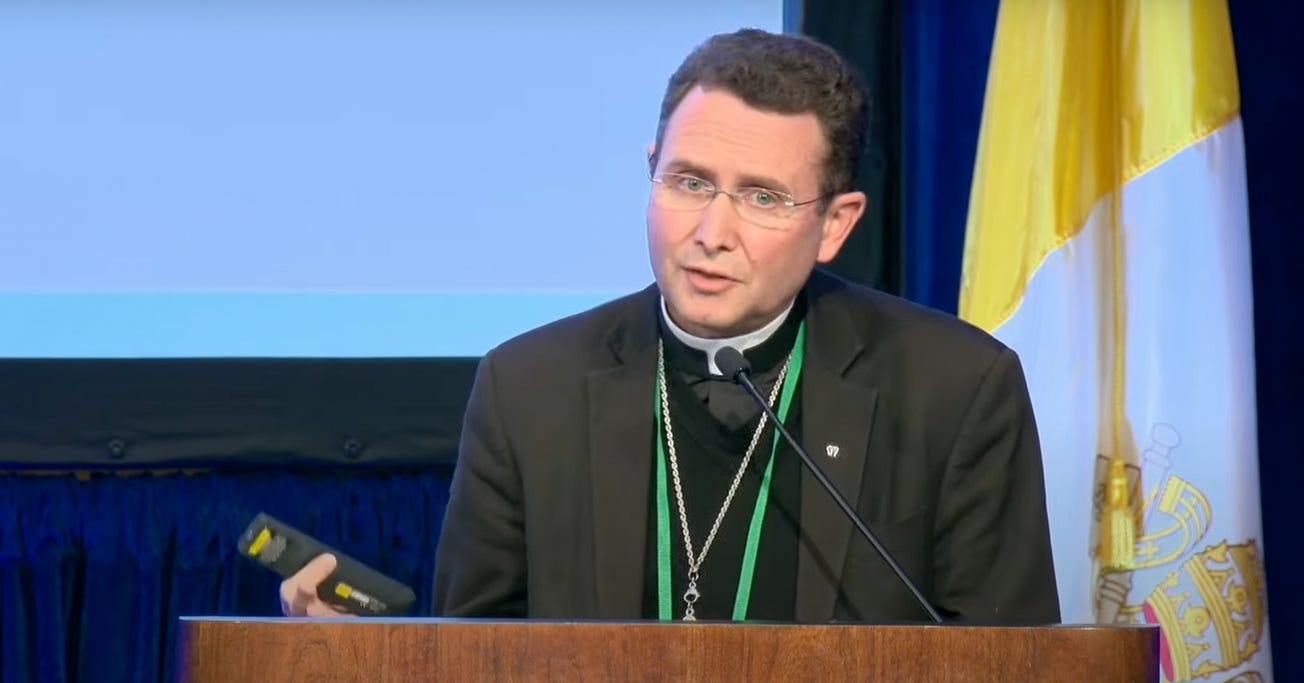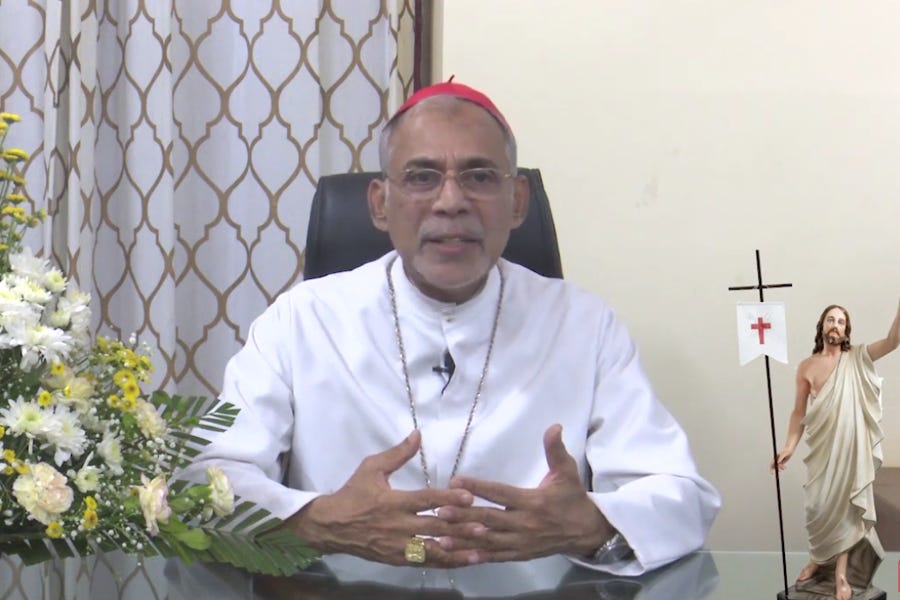September 5 marks the feast day of Mother Teresa, venerated by the Church as St. Teresa of Calcutta.
Mother Teresa and the Missionaries of Charity she founded are well-known for their work with the sick, impoverished, and abandoned in the poorest areas of India. Perhaps less well-known is the presence of the Missionaries of Charity in the United States.
How did the congregation - known for its work among the poorest of the poor - come to be in such a wealthy nation? And what does their work here look like?
We took a look at the history of the Missionaries of Charity and spoke to Sister Paula Marie, MC, regional superior for the western United States, about the congregation’s ministry in the country. Here’s what we learned:
How did the Missionaries of Charity end up in the United States?
Mother Teresa founded the Missionaries of Charity in 1950, with the mission of caring for the poorest of the poor. The congregation began its work in the slums of India. In 1965, Pope St. Paul VI granted official permission to expand the missionaries’ work and establish houses in different parts of the world.
The sisters’ presence in the United States reaches back 40 years. In the early 1970s, the Missionaries of Charity opened a house in the Bronx, one of the poorest areas in the United States.
In 1976, Cardinal John Carberry, then-Archbishop of St. Louis, asked Mother Teresa to establish a presence in his archdiocese. He repeated this request when Mother Teresa visited the city two years later, showing her the impoverished areas of the city. The sisters opened a home there soon afterward.
In 1980, after befriending Mother Teresa in Rome as rector of the Pontifical North American College, then-Archbishop James Hickey of Washington requested that she have her sisters establish a convent in his archdiocese to care for people afflicted with serious health conditions like HIV/AIDS and drug addiction. The Missionaries of Charity agreed to do so, despite the public stigma and confusion associated with HIV/AIDS, and opposition among many Washington, D.C. residents to the sisters’ housing and care for AIDS patients in their neighborhoods.
Following her visit to Little Rock, Ark. in 1982, Mother Teresa agreed to send some sisters to run the Abba House, a homeless shelter for women and children established by the Diocese of Little Rock. The sisters also conduct visits to housebound and imprisoned individuals, and teach a Vacation Bible School for local underprivileged children.
That same year, the congregation established a convent in San Francisco, where they cared for both AIDS patients and pregnant women in need.
Throughout the 1980s and beyond, the congregation’s presence in the country continued to grow, as bishops requested communities to open homes and minister to the poor in their dioceses.
Sister Paula Marie told The Pillar that, over time, some of these homes have adopted their focus to respond to changing needs.
While care for AIDS patients was a critical need in the 1980s, the development of new medications meant that people with the illness were able to live independently. As a result, some of the Missionaries of Charity homes dedicated to AIDS patients have been repurposed for other types of medical care, including as hospices.
Is the poverty in the United States different from that in a developing nation?
Material poverty is less prevalent in the United States than in developing countries, Sister Marie told The Pillar, and the “material needs of the people are much less extreme.” True starvation is rare in the United States, she noted, due to both government and private programs that are lacking in other countries.
However, she said, U.S.-based missionaries often encounter what she calls a “poverty of abandonment,” with homelessness, mental illness, and substance abuse all presenting themselves as “huge issues” in the United States.
“There’s more depression, more sense of hopelessness and despair, more purposelessness of life” in the United States than in many developing nations, she said.
In addition, there is a “distinct lack of spiritual direction” in the United States, Sr. Marie said. She noted that in her 17 years of living in India, she encountered materially impoverished people who were often “deeply spiritual” and living with their families. In the United States, however, she sees a crisis of “spiritual poverty,” loneliness, “broken families,” and deeply-ingrained societal irreligion that she believes are contributing to many of the nation’s problems.
Sr. Marie said this spiritual poverty presents unique challenges for ministry. “If we’re broken from God, we’re just going to break,” she said. “If somebody is hungry, you give them a plate of food, and in that moment, you’ve satisfied it. But spiritual poverty is very hard to overcome, because it requires a depth of relationship―it requires much more.”
Where do the Missionaries of Charity have houses in the United States today?
The Missionaries of Charity maintain 41 active houses in the United States. Along with a national headquarters in The Bronx, N.Y. serving the eastern U.S., the sisters also operate two regional headquarters in St. Louis, Mo. for the central U.S. and Pacifica, Calif. for the western U.S. The missionaries’ regional center in Port-au-Prince, Haiti supports their work in the state of Florida.
Sister Marie said the missionaries minister in both urban and rural areas, but, while practical local needs differ, the philosophy of bringing Christ’s love to the most vulnerable does not change.
Among those being served by the Missionaries of Charity today are the sick and disabled in rural Kentucky and the elderly in Washington, D.C.
Although the United States is a wealthy nation, poverty does exist, Sister Marie told The Pillar, and is a serious problem.
“We see homelessness increasing,” she said. “We’re also seeing more mental illness. And that’s very difficult, because generally speaking, people with mental illness have to be accompanied. They can’t be on their own...and there’s not accompaniment for them.”
Where else do the Missionaries of Charity serve?
As of 2015, the Missionaries of Charity have more than 5,000 active and contemplative sisters serving in 120 different countries. The sisters operate more than 750 houses in both developed and developing nations. They care for the sick and elderly, refugees, orphanages, the mentally ill, and other people in need. More than 400 active and contemplative brothers and 35 priests are also affiliated with the Missionaries.
While most of the Missionaries of Charity are active - serving those in poverty around them - some are contemplative, living out an apostolate of prayer. The contemplative brothers and sisters have some encounter with those in need, but their focus is prayer rather than corporal works of mercy.
In addition, Lay Missionaries of Charity include single and married individuals who make private vows of poverty, chastity, obedience, and service to the poorest of the poor. These individuals seek to participate in the charism of the Missionaries of Charity through lives of prayer, penance, and works of mercy, with a focus on the sanctification of their families and the poor in their communities.





